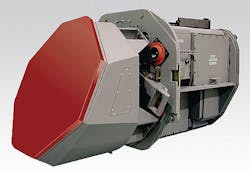Navy asks Raytheon to provide upgrade kits for F/A-18 E/F airborne radar systems
Officials of the Naval Air Systems Command at Patuxent River Naval Air Station, Md., are asking experts at the Raytheon Space and Airborne Systems segment in El Segundo, Calif., to provide 12 AN/APG-79 Active Electronically Scanned Array (AESA) Configuration D kits to meet the latest radar requirements for the F/A-18 E/F aircraft.
The order, announced on 30 Dec., involves engineering change proposals collectively referred to as AESA Configuration D kits. Changes pertain to upgrades to the AESA radar's GPP3 general-purpose processor, fifth and sixth channel wiring, and waveform generator.
The Raytheon AN/APG-79 AESA radar employs active electronic beam scanning, which enables the radar beam to steer at nearly the speed of light, Raytheon officials say.
The AN/APG-79 optimizes the F/A-18 E/F's situational awareness and provides air-to-air and air-to-surface weapons capability. The agile beam enables the multimode radar to interleave in near-real time, so that pilot and crew can use both modes simultaneously.
Related: Air Force considering AESA radar upgrades for B-1 and B-52 strategic bomber fleets
The AN/APG-79 demonstrates reliability, image resolution, targeting, and tracking range significantly greater than that of the previous mechanically scanned array F/A-18 radar, Raytheon officials say. With its open-systems architecture and compact commercial-off-the-shelf (COTS) parts, it delivers increased capability in a smaller, lighter package.
The array is composed of solid-state transmit and receive modules to limit mechanical breakdown. Other system components include an advanced receiver/exciter, ruggedized COTS processor, and power supplies.
On this order Raytheon will do the work in Forest, Miss.; El Segundo, Calif.; and Andover, Mass., and is expected should be finished by April 2017.
For more information contact Raytheon Space and Airborne Systems online at www.raytheon.com, or Naval Air Systems Command at www.navair.navy.mil.
